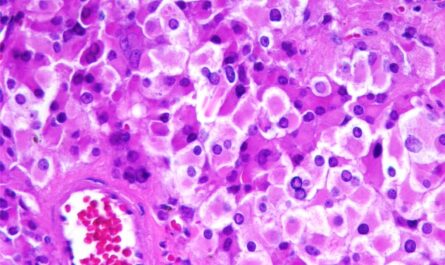A groundbreaking development by a team of researchers has led to the creation of a new probe that can identify senescent cells in urine. This innovative approach has the potential to revolutionize the monitoring and understanding of the aging process, paving the way for novel strategies to combat age-related degeneration.
Published in Nature Communications, the research highlights the significance of senescent cells in aging, with their accumulation in various organs being a key marker of age-related tissue dysfunction. These cells are also implicated in a myriad of age-related diseases, underscoring the importance of early detection and intervention.
Cellular senescence serves as a protective mechanism against the proliferation of damaged cells that could potentially develop into cancer. However, as the body ages or when cellular damage persists, senescent cells can build up abnormally, hastening the aging process and impacting tissue function adversely.
According to Ramón Martínez Máñez, deputy director of the Inter-University Research Institute for Molecular Recognition Research and Technological Development (IDM) at the UPV, the development of efficient systems for detecting senescent cells is crucial. The newly devised probe is designed to interact with an enzyme prevalent in senescent cells upon injection into mice, generating a fluorescent compound that is swiftly excreted in urine. By analyzing the intensity of this fluorescent signal in urine samples, researchers can gauge the burden of senescent cells in the organism.
In addition to detection, the researchers also explored the efficacy of senolytic treatment involving drugs that target and eliminate senescent cells to rejuvenate tissues. They observed a correlation between the reduction of senescence in animals undergoing treatment and a decrease in age-related anxiety, as indicated by the intensity of the signal in the urine post-treatment.
Isabel Fariñas of the UV, deputy director of CIBERNED, and Mar Orzáez of the CIPF emphasize the role of a fluorophore released upon administration, which is subsequently excreted by the kidneys and quantifiable in urine samples. The level of cellular senescence load is reflected in the intensity of the fluorophore, offering valuable insights into age-related changes and treatment outcomes.
The results stemming from collaborative efforts by researchers from Universitat Politècnica de València, Universitat de València, CIBER-BBN, CIBERNED, and the Príncipe Felipe Research Centre hold promise for enhancing the comprehension of aging processes and their impact on health. The newfound ability to detect senescent cells in urine may lead to the development of more targeted and efficient interventions for age-related conditions, including potential urinary treatments aimed at mitigating cellular senescence. Ramón Martínez Máñez concludes that this research represents a significant step towards addressing age-related challenges and may offer transformative solutions for enhancing overall health and well-being.
*Note:
1. Source: Coherent Market Insights, Public sources, Desk research
2. We have leveraged AI tools to mine information and compile it




